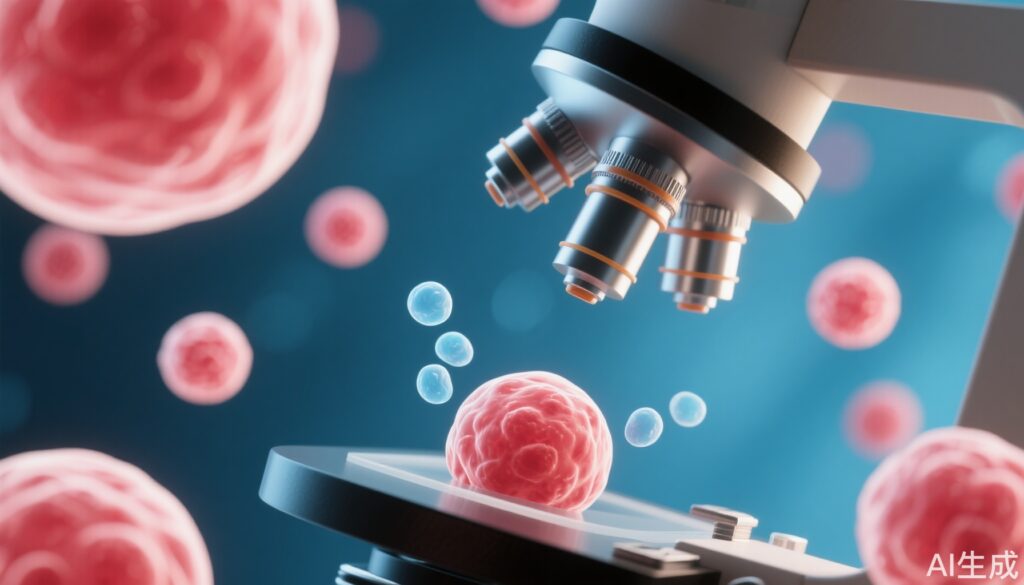A Ray of Hope for Women with Ovarian Failure
For women facing ovarian failure, the journey to conceive can be fraught with challenges. However, advancements in regenerative medicine are paving the way for innovative solutions. Stem cell therapy, particularly the Stem Cell Regenera protocol, has emerged as a promising approach to restoring fertility. Recent findings published in the journal Aging (Aging-US) shed light on the efficacy and safety of this revolutionary treatment.
Understanding Ovarian Failure and Its Impact
Ovarian failure encompasses conditions such as Diminished Ovarian Reserve (DOR), Poor Ovarian Response (POR), and Premature Ovarian Insufficiency (POI). These conditions are characterized by reduced ovarian function, leading to challenges in natural conception. Key markers for ovarian reserve include Anti-Müllerian Hormone (AMH) levels and Antral Follicular Count (AFC), both of which are often diminished in affected women.
The Stem Cell Regenera Protocol: Mechanism and Application
The Stem Cell Regenera protocol utilizes granulocyte colony-stimulating factor (G-CSF) to mobilize stem cells into the bloodstream, followed by an injection of Stem Cell Factor-enriched platelet-rich plasma (SCFE-PRP). This method aims to activate dormant ovarian cells, increasing the likelihood of oocyte activation and subsequent conception.
Clinical Study Insights
A retrospective observational study analyzed the outcomes of 145 women undergoing this treatment. Participants, with a mean age of 39 years, exhibited varying degrees of ovarian failure. Measurements of platelet count, white blood cell count, and hemoglobin levels provided baseline data. At baseline, a platelet count of 247,910 x 1012/mm3 and mean white blood cell count of 6,025 x 109/mm3 were reported. Additionally, the mean hemoglobin was 13 g/dl.
Results: Promising Outcomes for Fertility Restoration
Oocyte activation was achieved in approximately 68.28% of participants. Among them, 7.07% experienced spontaneous pregnancy, while 14.14% conceived through in vitro fertilization (IVF). Notably, no pregnancies occurred in the absence of oocyte activation, underscoring its importance.
All patients reported successful CD34+ cell mobilization, with a slight increase in the median number of CD34+ cells/μ among women with activation vs those without activation. Adjustments to the G-CSF dosage were necessary in 30% of women during the 4-day treatment.
Differences in efficacy were not observed based on age group. However, a higher rate of oocyte activation was reported in women aged under 38 years vs those aged 38 years and older. Additionally, a positive correlation was reported between white blood cells and CD34+ cells/μl, with a correlation coefficient of 0.465.
The treatment was well-tolerated, with 53% of participants reporting no adverse effects. Mild symptoms were observed in 33%, and moderate-to-severe effects in 14%. The protocol successfully mobilized CD34+ cells in all participants, a critical factor for treatment efficacy.
The optimal cutoff for leukocytes to achieve a high rate of oocyte activation was 33,340 / mm3. For CD34+, the optimal cutoff point was 5248.8/mm3.
No adverse events were reported in 53.1% of participants, mild in 32.8%, and moderate to severe in 14.1%. This indicated that most women experienced none or mild symptoms.
These results indicated promise for the Stem Cell Regenera treatment to achieve oocyte activation in approximately 70% of women. Additionally, the treatment displayed efficacy for achieving pregnancy spontaneously and through IVF.
Future Directions
While these findings are promising, further research is needed to optimize protocols and confirm long-term safety. Studies exploring the effects of age, dosage adjustments, and individual biological responses will enhance our understanding.
Conclusion
Stem cell therapy represents a beacon of hope for women facing ovarian failure, offering a pathway to conception that was previously deemed unattainable. With ongoing research and refinement, this approach may revolutionize fertility treatments, bringing joy to countless families.
References
- Stem cell treatment shows potential for restoring fertility in women with ovarian failure. Impact Journals LLC. July 21, 2025. Accessed July 23, 2025. https://www.eurekalert.org/news-releases/1091927.
- Santamaria A, Ballester A, Muñoz M. Enhancing oocyte activation in women with ovarian failure: clinical outcomes of the Stem Cell Regenera study using G-CSF mobilization of peripheral blood stem cells and intraovarian injection of stem cell factor-enriched platelet rich plasma in real-world-practice. Aging. 2025. doi:10.18632/aging.206274



